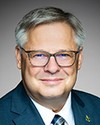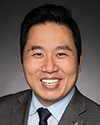That's a very important question, because at the heart of being able to develop adaptation and mitigation responses is knowing what's changing and how quickly it is changing. Is it a cycle, or is it just a perturbation? Is it really a long-term directional change?
For that, we need longer-term records. We have many of those records in Canada. Maintaining them in the long term is a challenge. Many people are committed to maintaining those records, but we're realizing that historically we have observations in certain places that may not be where the largest changes are taking place or where the impacts of current changes are being observed. Those places are in remote places like PEARL or the Northwest Passage, where accessing and maintaining marine buoy observations can be done only during a very short window during the open water season.
We're realizing all of these things are complemented by the local and community and indigenous knowledge that lets us extend our understanding of changes much further back in time. Our scientific observations span perhaps only 20 years, but once we start understanding how people who lived in those places observed that environment over generations, it puts things into a better context for us and allows us to better forecast what might happen in the near future.




